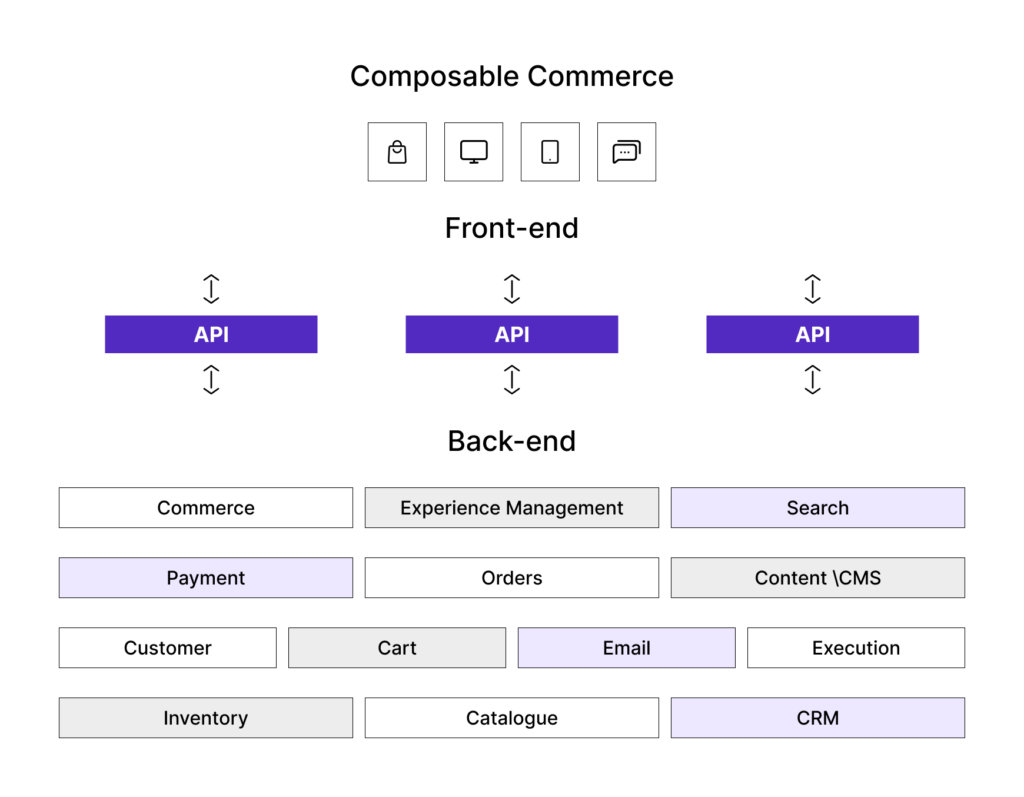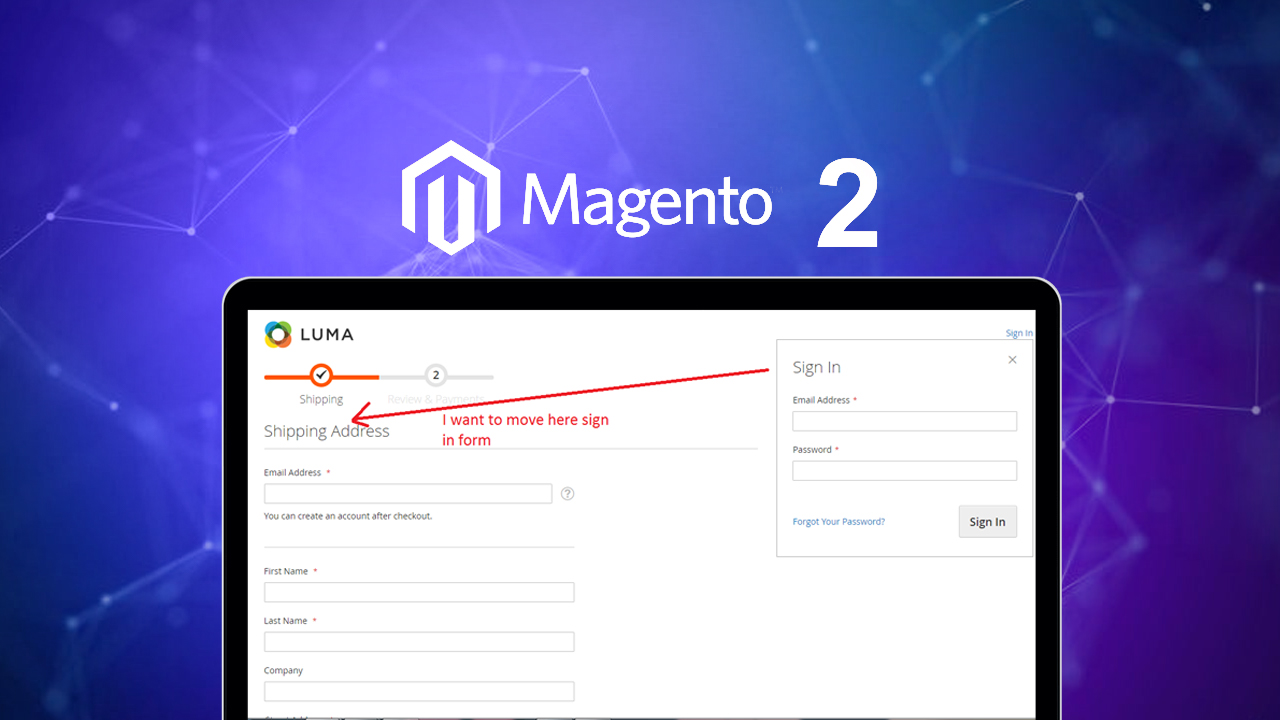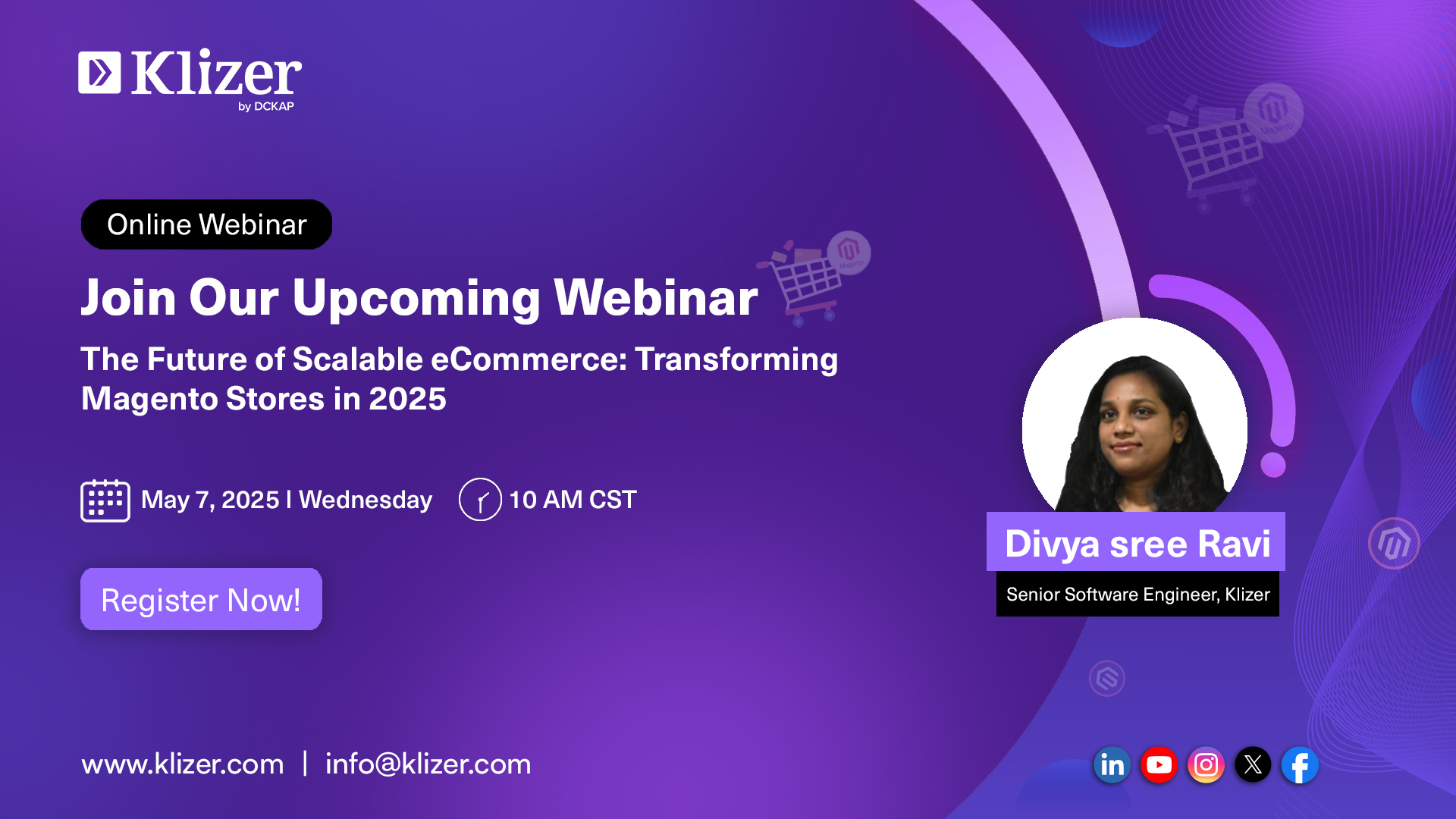Imagine building an online store with interchangeable parts, like Legos. That’s the core idea behind composable commerce solutions.
Instead of a single, monolithic platform, composable commerce lets you pick and choose best-of-breed technologies from various vendors. These technologies interact with each other through APIs, creating a flexible and adaptable e-commerce experience that can grow and change with your business needs.
In this guide, we explore the potential of composable solutions for B2B businesses, advantages, principles, and implementation steps.

ON THIS PAGE
Top 7 Composable Commerce Solutions
Composable commerce solutions are a concept that allows companies to adapt and grow their digital presence and keep up with current trends. Here is a breakdown of the most popular solutions.
1. Salesforce Commerce Cloud
Salesforce Commerce Cloud is a robust and scalable commerce platform designed to support businesses to deliver personalized shopping experiences across multiple channels. It provides a comprehensive suite of tools for managing product catalogs, pricing, promotions, and customer interactions.
Differences
- Salesforce Commerce Cloud offers seamless integration with other Salesforce products, such as CRM and marketing automation, enabling businesses to leverage customer data for personalized marketing campaigns and sales strategies.
- Its AI-powered capabilities, including Einstein AI, enable predictive analytics and personalized product recommendations to enhance the customer shopping experience.
- Salesforce Commerce Cloud’s extensive ecosystem of third-party integrations and extensions allows businesses to extend the platform’s functionality according to their specific needs.
Features
- Omni-channel Commerce: Enable customers to shop across web, mobile, social, and in-store channels.
- Unified Commerce Operations: Streamline commerce operations with centralized management of product catalogs, pricing, and promotions.
- Extensible Architecture: Easily extend the platform’s functionality with pre-built integrations and custom extensions.
- Analytics and Insights: Gain actionable insights into customer behavior and market trends to drive informed business decisions.
2. Adobe Commerce (Formerly Magento Commerce)
Adobe Commerce is a leading open-source commerce platform known for its flexibility, scalability, and extensive customization options. It provides businesses with the tools they need to create unique and engaging commerce experiences suited to their brand and audience.
Differences
- Adobe Commerce offers a highly customizable and modular architecture, allowing businesses to build and scale their commerce operations according to their specific requirements.
- Its extensive marketplace of extensions and themes provides businesses with a wide range of options for extending the platform’s functionality and customizing the user experience.
Features
- Cloud Deployment Options: Scale resources dynamically and leverage Adobe’s cloud infrastructure for reliability and performance.
- Multi-Channel Selling: Reach customers wherever they are with seamless integration across web, mobile, social, and in-store channels.
- Advanced Analytics: Gain insights into customer behavior and sales performance to optimize marketing strategies and drive revenue.
3. SAP Commerce Cloud
SAP Commerce Cloud is an enterprise-level commerce platform designed to meet the complex needs of B2B businesses. It provides a comprehensive suite of tools for managing product catalogs, pricing, and order management, as well as innovative features for personalization and customer engagement.
Differences
- SAP Commerce Cloud integrates seamlessly with other SAP products, such as ERP and CRM systems, enabling businesses to streamline commerce operations and leverage customer data for personalized marketing and ecommerce sales strategies.
- Its modular architecture allows businesses to customize and extend the platform’s functionality according to their specific requirements, while its cloud deployment options offer scalability and flexibility to adapt to changing market conditions.
Features
- Enterprise-Level Commerce Capabilities: Manage complex product catalogs, pricing, and promotions with ease.
- Personalized Marketing: Deliver targeted marketing campaigns and promotions based on customer behavior and preferences.
- Cloud Deployment Options: Scale resources dynamically and leverage SAP’s cloud infrastructure for reliability and performance.
- Advanced Analytics: Gain insights into customer behavior and sales performance to optimize marketing strategies and drive revenue.
4. Oracle Commerce Cloud
Oracle Commerce Cloud combines commerce, marketing, and service capabilities to deliver personalized shopping experiences across every touchpoint. It provides the tools that businesses need to attract, engage, and retain customers in today’s digital marketplace.
Differences
- Oracle Commerce Cloud’s integrated approach combines commerce, marketing, and service capabilities into a single platform, enabling businesses to deliver seamless customer ecommerce experiences across every touchpoint.
- Its built-in AI capabilities, including machine learning and predictive analytics, enable businesses to deliver personalized product recommendations and marketing messages to customers based on their behavior and preferences.
Features
- Personalized Experiences: Deliver targeted marketing campaigns and promotions based on customer behavior and preferences.
- Cloud Deployment Options: Scale resources dynamically and leverage Oracle’s cloud infrastructure for reliability and performance.
- Extensible Composable Architecture: Customize and extend the platform’s functionality with pre-built integrations and custom extensions.
Recommended Read: Composable Commerce vs. Headless Commerce
5. Shopify Plus
Shopify Plus is a scalable and customizable commerce platform designed for high-growth and enterprise-level businesses. It provides businesses with the tools they need to create unique and engaging commerce experiences tailored to their brand and audience.
Differences
- Shopify Plus offers a user-friendly interface and intuitive design, making it easy for businesses to launch and manage their online store without the need for technical expertise.
- Its extensive app ecosystem provides businesses with a wide range of options for extending the platform’s functionality and customizing the user experience, while its cloud deployment options offer scalability and flexibility to adapt to changing market conditions.
- Shopify Plus’s built-in analytics and reporting tools provide businesses with actionable insights into customer behavior and sales performance, empowering them to make informed business decisions.
Features
- Scalable Commerce Platform: Easily scale resources and functionalities to meet growing business needs.
- Customizable Design: Tailor the commerce experience to match your brand identity and customer preferences.
- Cloud Deployment Options: Scale resources dynamically and leverage Shopify’s cloud infrastructure for reliability and performance.
6. BigCommerce
BigCommerce is a leading commerce platform known for its simplicity, scalability, and ease of use. It provides businesses with the tools they need to launch and manage their online storefronts with ease, while its robust features and integrations enable businesses to grow and scale their operations over time.
Differences
- BigCommerce offers a user-friendly interface and intuitive design, making it easy for businesses to launch and manage their online storefronts without the need for technical expertise.
- Its extensive app ecosystem provides businesses with a wide range of options for extending the platform’s functionality and customizing the user experience, while its cloud deployment options offer scalability and flexibility to adapt to changing market conditions.
- BigCommerce’s built-in analytics and reporting tools provide businesses with actionable insights into customer behavior and sales performance, supporting them to make informed business decisions.
Features
- Easy-to-Use Interface: Launch and manage your online storefront with ease, without the need for technical expertise.
- Cloud Deployment Options: Scale resources dynamically and leverage BigCommerce’s cloud infrastructure for reliability and performance.
- Advanced Analytics: Gain insights into customer behavior and sales performance to optimize marketing strategies and drive revenue.
7. Commerce Tools
Commercetools is a headless commerce platform that supports businesses to build custom, modular digital commerce approach experiences tailored to their unique needs. Its API-first approach enables businesses to decouple the front-end presentation layer from the back-end commerce functionality, providing greater flexibility and customization options.
Differences
- Its API-first approach provides businesses with well-defined APIs for facilitating integration with external systems and enabling rapid development and innovation.
- Commercetools’ cloud-native architecture offers scalability and reliability, enabling businesses to adapt and evolve their commerce experiences over time.
Features
- Headless Commerce Platform: Decouple the front-end presentation layer from the back-end commerce functionality for greater flexibility and customization with headless technology.
- Cloud-Native Architecture: Scale resources dynamically and leverage Commercetools’ cloud infrastructure for reliability and performance.
- Modular Commerce Experiences: Build custom, modular commerce experiences tailored to your unique needs.
- Extensive Open Ecosystem: Choose from a wide range of integrations and extensions to extend the platform’s functionality and design.
Also Read: 10 Best Headless Ecommerce Solutions
4 Main Components of Composable Commerce Solutions
Commerce Core
This forms the backbone of the composable commerce platform, encompassing essential functionalities such as product catalog management, pricing, promotions, and order management. It serves as the central repository for product information and transactional data.
Experience Layer
The front-end components are responsible for creating engaging and intuitive user experiences across various channels and devices. This layer includes elements such as storefronts, product pages, checkout processes, and personalized recommendations. It focuses on delivering a seamless and cohesive experience for customers throughout their journey.
Integration Layer
This middleware layer facilitates communication between the commerce platform and external systems, such as ERP (Enterprise Resource Planning), CRM (Customer Relationship Management), and marketing automation platforms. It provides APIs (Application Programming Interfaces) and connectors for seamless data exchange and workflow automation, ensuring interoperability and scalability.
Analytics and Insights
Tools and capabilities for capturing, analyzing, and leveraging customer data to drive personalized experiences and optimize performance. This component enables businesses to gain actionable insights into customer behavior, preferences, and trends, empowering them to make data-driven decisions and improve their commerce strategy continually.
Read: Top 13 Composable Commerce Examples
7 Steps to Implement Composable Commerce
Step 1: Assessment
Conduct a comprehensive assessment of current commerce capabilities, including existing systems, processes, and technologies. Identify areas for improvement or optimization, as well as potential challenges and constraints.
Step 2: Strategy Development
Define clear business objectives, target audience segments, and key performance indicators (KPIs) for the composable commerce initiative. Develop a roadmap and strategic plan that aligns with broader business goals and objectives.
Step 3: Platform Selection
Select a digital commerce platform that meets the specific requirements and scalability needs of the business. Consider factors such as platform capabilities, ecosystem maturity, vendor reputation, and total cost of ownership (TCO).
Step 4: Integration Planning
Develop a comprehensive integration strategy to connect the composable commerce platform with existing systems, such as ERP, CRM, and marketing automation platforms. Identify integration points, data mappings, and workflow automation requirements to ensure seamless data exchange and business process continuity.
Step 5: Development and Customization
Build and customize commerce components, front-end experiences, and integrations according to the defined requirements and specifications. Leverage modular architecture frameworks to accelerate development cycles and promote code reusability.
Step 6: Testing and Quality Assurance
Conduct rigorous testing to ensure the stability, performance, and security of the composable commerce platform. Perform functional testing, integration testing, performance testing, and security testing to identify and address any issues or defects before deployment.
Step 7: Deployment and Optimization
Deploy the digital commerce platform to production environments and monitor its performance and usage closely. Continuously collect and analyze data to identify areas for optimization and improvement, such as user experience enhancements, performance optimizations, and feature enhancements.
Key Principles of Composable Commerce
Modularity
- The concept of breaking down the commerce platform into smaller, reusable components that can be independently developed, deployed, and maintained.
- By adopting a modular approach, businesses can achieve greater flexibility and agility, allowing them to adapt and evolve their commerce experience over time without disrupting existing operations.
Flexibility
- Designing systems and architectures that can accommodate changing business requirements, market dynamics, and technological advancements.
- This principle emphasizes the importance of building solutions that are adaptable and resilient, enabling businesses to respond quickly to emerging opportunities and challenges.
Interoperability
- It ensures seamless integration and interoperability with existing systems and third-party applications through well-defined APIs, standards, and protocols.
- By approaching interoperability, businesses can leverage their existing investments in technology infrastructure while also harnessing the capabilities of best-of-breed solutions and services.
Scalability
- Architect solutions that can scale horizontally to accommodate growing traffic, transaction volumes, and business complexity.
- This principle focuses on designing systems that are resilient and performant, capable of handling peak loads and surges in demand without sacrificing responsiveness or reliability.
Benefits of Composable Commerce Solutions
Customization
- The modular nature of composable commerce solutions enables businesses to customize every aspect of their commerce experience, from the front-end presentation layer to the back-end functionality.
- This level of customization allows companies to differentiate themselves in the market and deliver unique value propositions to their customers.
Integration
- Composable commerce solutions facilitate seamless integration with existing systems and third-party applications.
- It enables businesses to leverage their investments in technology infrastructure and harness the capabilities of best-of-breed solutions.
- Robust APIs and integration tools simplify the process of connecting disparate systems, ensuring data consistency and workflow automation.
Agility
- By decoupling components and services, composable commerce solutions enable businesses to quickly adapt and respond to changing market conditions, customer preferences, and technological advancements.
- This agility allows companies to stay ahead of the competition and capitalize on emerging opportunities while mitigating risks and uncertainties.
Composable Commerce Solutions with Klizer
Composable commerce solutions represent a paradigm shift for B2B businesses, offering unparalleled flexibility, scalability, and customization. This guide has provided a comprehensive roadmap for leveraging composable commerce effectively, from the top solutions like Salesforce Commerce Cloud to the key principles and implementation steps.
Connect with Klizer and we will help you build solutions using the above-mentioned platforms. Now, it’s time to take action.
FAQs
What makes composable commerce solutions different from traditional commerce platforms?
Composable commerce solutions offer a modular architecture, allowing ecommerce businesses to break down their commerce platform into reusable components. This modularity enables greater flexibility, scalability, and customization compared to traditional ecommerce platforms.
How can I determine if composable commerce is the right choice for my business?
Assess your ecommerce business needs, growth projections, and technical requirements to determine if the flexibility and scalability offered by composable commerce align with your objectives. Consider factors such as the complexity of your product catalog, the need for customization, and the importance of integrating with existing systems.
What are the key benefits of adopting a composable commerce architecture for organizations?
Composable commerce architectures offer organizations unparalleled flexibility, scalability, and customization capabilities, allowing them to tailor their digital commerce experiences to meet specific business needs and customer expectations. By leveraging a composable approach, organizations can seamlessly integrate best-of-breed technologies, adapt to constant change, and deliver innovative customer experiences.
How does a composable approach differ from a traditional approach in terms of business capabilities and customer needs?
In a traditional commerce platform model approach, businesses are constrained by a single vendor’s solution, limiting their ability to innovate and respond to evolving customer needs. In contrast, a composable system approaches the businesses to mix and match individual components from different vendors, building a cohesive solution tailored to specific business requirements and customer expectations. This flexibility enables organizations to adapt more quickly to changing market dynamics and deliver superior customer experiences.
What role do business teams and users play in the implementation of a composable commerce architecture?
Ecommerce businesses collaborate with tech teams to define specific business needs and requirements, prioritize the selection of software components and technologies, and ensure alignment with overall business objectives. By actively participating in the development and customization process, business users and tech teams contribute to the successful implementation and adoption of composable commerce solutions within their organizations.
How does a composable commerce architecture enable organizations to meet the high expectations of modern consumers?
Composable commerce architectures deliver innovative and personalized customer experiences across digital channels, meeting the high expectations of modern consumers. By leveraging best-of-breed technologies and open ecosystems, organizations can rapidly adapt to changing consumer behaviors and preferences, ensuring seamless interactions and driving customer satisfaction.
What are the primary considerations for organizations when selecting ecommerce platforms in the context of a composable commerce approach?
When selecting ecommerce platforms for a composable commerce approach, organizations should prioritize flexibility, scalability, and interoperability. They should evaluate platforms based on their ability to support an API-first architecture, seamlessly integrate with third-party services, and accommodate the specific business processes and requirements of the organization. Additionally, organizations should consider the ecosystem of partners and vendors associated with each platform, as well as the platform’s track record of innovation and support for modern technologies.







